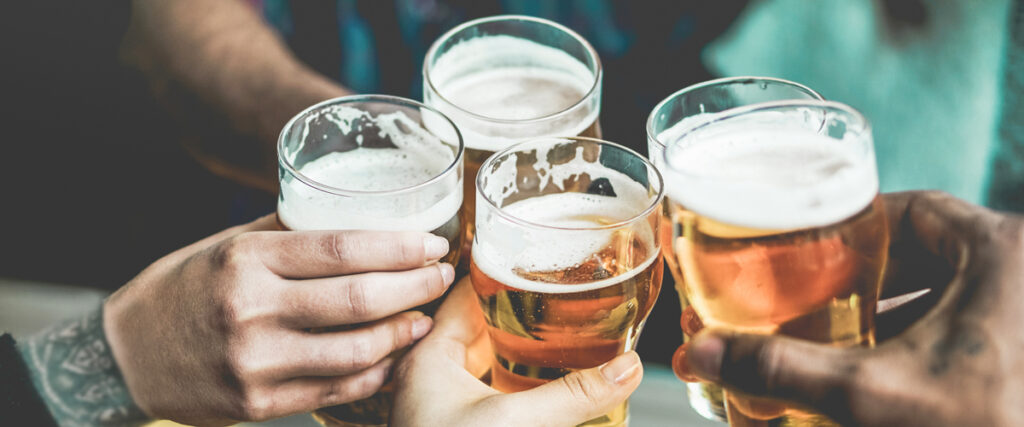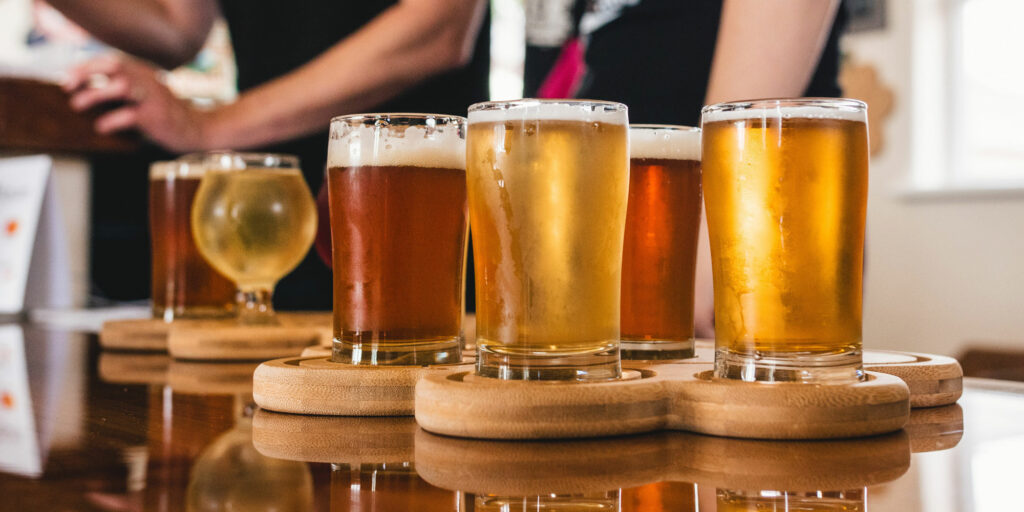As someone who enjoys alcohol, the first step towards letting go of my cynicism towards low and no alcohol beers was learning to understand that they’re not necessarily produced with someone like me in mind. Why would I, someone who enjoys alcoholic beverages, be interested in alcohol free beer in the first place?

But there are plenty of reasons why people might choose a low, or non-alcoholic beer ahead of a full strength one. It could be for whatever reason someone can’t, or chooses not to drink alcohol. Or it could be something more subtle, like the fact they’ve popped down the local to meet a friend, but they happen to be the designated driver. It could simply be the fact they fancy relaxing with a beer, but don’t want to feel the effects of alcohol.
To the latter point, up until quite recently there has been a dearth in the quality of low and no alcohol beers. Bar a few high quality German-made examples such as those from Rothaus or Erdinger, largely the quality of drinks available was mid-to-poor. This meant that most non-beer low alcohol beverages on the market were either pretty boring, or were soft drinks that are full of sugar, lessening their appeal to someone who would prefer to drink beer, or at least something beer-adjacent.
Times, thankfully, have changed. Advances in the technology used to manufacture alcohol free beer (as well as better availability, and relative affordability for smaller producers) have triggered a surge in the number of brands and products available. These range from crisp lagers, to robust porters, and juicy, hazy IPAs and pale ales. What’s available isn’t just produced by large, multinational operators either, with an increasing number of options being made by small, independently-owned breweries.
I’ve even found gaps in my own drinking schedule where beers such as Lucky Saint’s lager, or pale ales from Kent’s Good Karma Brewery neatly fit into gaps where I just don’t fancy an alcoholic beer. It could be immediately after exercise, or on a day when I’ve consciously opted not to drink alcohol, but still find myself craving the satisfaction of popping open a can while I wind down from the working day. Sometimes the ritual is as important as the drinking itself.
The growth of the low and no alcohol beverage category is largely down to the fact more people, in particular Millennials (26-44) and Generation Z (18-25) are drinking increasingly mindfully, with the buzz that alcohol provides not necessarily central to the enjoyment of a particular occasion. This is no doubt buoyed by the wide range and vastly improved quality of options now available.
According to a report published last year in The Guardian, sales of low and no alcohol beers were 25% higher in June 2023 than they were six months previously – evidence that the trend has stretched far beyond movements such as Dry January. Low and no alcohol beer only accounts for 0.7% of the overall UK beer market, but according to data firm Statista, the category is expected to see 5.63% year on year growth, with total revenues expected to reach £109 million in 2024.
This makes it one of the fastest growing food and beverage categories in the UK, driven by both existing brands pushing more product into the market, and scores of new entrants looking for their own bite of the cherry. As mentioned, plenty of existing small producers are also noticing the trend and pivoting towards the low and no category, with Bristol’s Wiper & True being a notable example, having installed their own de-alcoholiser in late 2023.
The rush of breweries looking to take advantage of this growing sector mirrors the challenging circumstances the brewing industry currently faces: rising costs driven by inflation, and a customer base with less spending money in their pockets. Add in the fact that a brewery pays zero duty on beers under 1.2% in alcohol, and suddenly you’ve got an attractive source of revenue that could help a struggling business survive during a significant period of uncertainty.
Brands eager to capture the hearts and minds of those drinking less should be mindful themselves, however, perhaps taking a look at the wider beer market itself before it lunges into a fledgeling category. In the UK, the small brewery numbers saw a surge between 2002 and 2022, with around 1800 new breweries opening their doors over two decades. Inevitably, the market became saturated and this, coupled with the current cost of living crisis, is beginning to impact the viability of these businesses. 35 breweries closed in the first 6 months of 2023, almost as many as the entirety of 2022, when there were 38 officially confirmed closures.

One alcohol free beer producer, Freestar, also bit the dust last year. Early in 2023 it successfully crowdfunded £350,000 in less than 48 hours, after reporting a 427% increase in sales during the first week of 2023. Sadly, by August the same year, the company went out of business, with its founder Felix Von Hurter claiming that, despite the previously reported uptick, the brand was unable to hit the volumes it required to be sustainable.
Thi demonstrates that yes, the no and low beer category is certainly experiencing a boom, while also indicating that, like with beer as a whole, it is not a sector free from significant risk. While I expect the current rate of growth to continue in the short term, I doubt the category will ever hold a significant percentage of the overall beer category, as interest in the sector eventually plateaus.
Plus, there are still a handful of unknown variables that the sector is working through as it grows. Despite some brands advertising their no and local alcohol options as being low calorie, or having health benefits due to containing certain vitamins, plus electrolytes, there has been some reporting that some brands may contain higher levels of sugar than their higher-in-alcohol equivalents.
Perhaps even more concerning is a US-study that looks into the possibility that low and no alcohol beers could provide an ideal breeding ground for certain pathogens, including dangerous strains of E. coli Salmonella, and Listeria. While larger breweries have access to pasteurization equipment, most low and no alcohol beers from smaller producers will be unfiltered. There will likely be a particular amount of scrutiny on draught products, when product is exposed to dispense equipment outside of where it was produced. This doesn’t mean these issues won’t crop up in-house. Diageo’s alcohol free Guinness is quickly proving to be one of the most popular new products in the category, but it’s worth remembering it had to recall the entirety of its first batch during its launch in the summer of 2020 due to contamination. I must stress, like with any food product, the risks are minimal, but with the category still in growth, I feel it’s unlikely we will go without further incident.
Despite these hurdles that the sector will have to navigate as and when they crop up, I still expect its outlook to be positive over the next twelve months. Further to this, I feel small breweries would do well to invest in the 1.2% to 3.4% alcohol category, where the duty paid is significantly lower. My gut tells me that we’ll see an increasing number of low strength brands emerge this year in order to take advantage of the lower tax-bracket, while also leveraging the growing mindful drinking movement. However, I also consider that predictions that the low and no alcohol category will make a serious dent on the market as a whole to be a touch over-optimistic.
— Matthew Curtis
If you’re interested in Low/No Alcohol brewing, check out our YouTube feature.